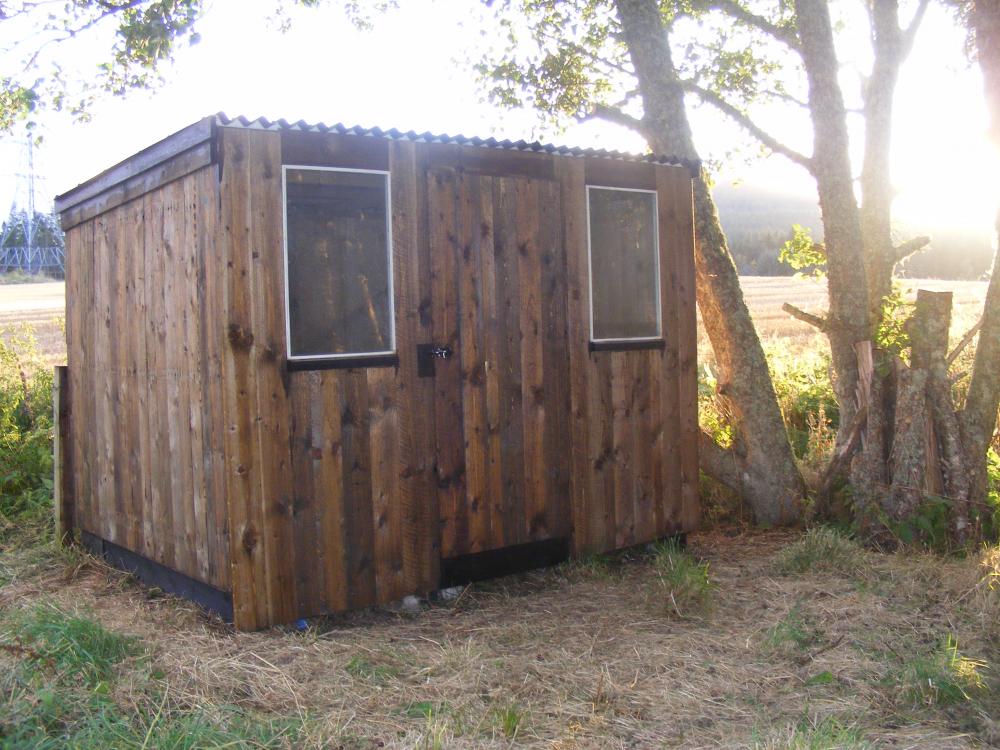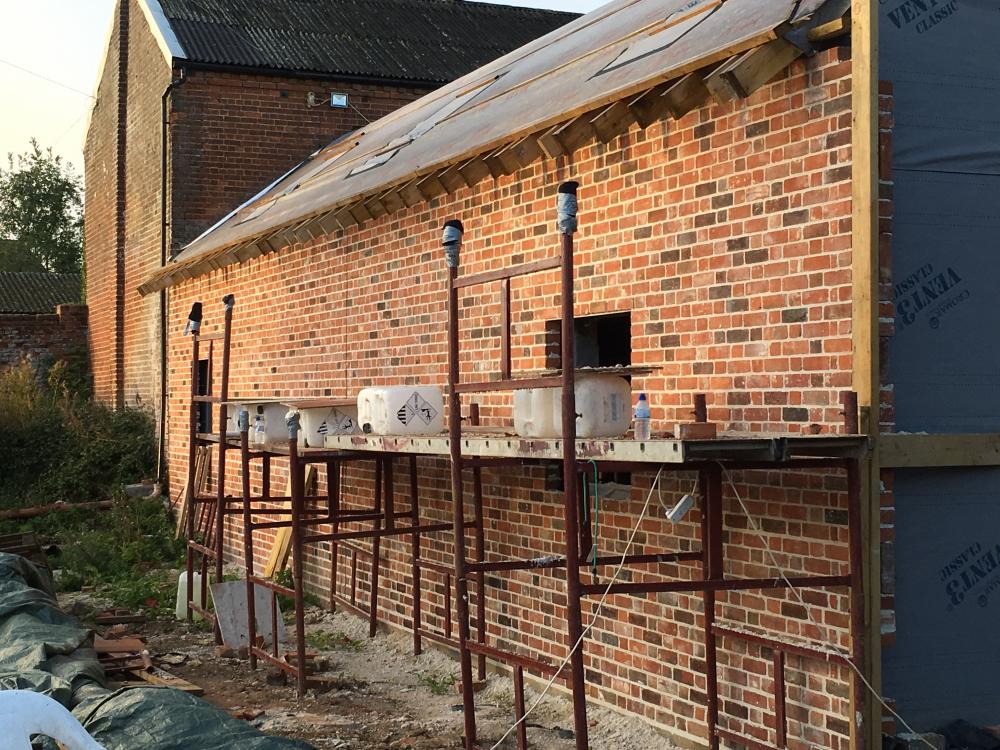Leaderboard
Popular Content
Showing content with the highest reputation on 10/17/16 in all areas
-
Can't please everyone. You've had months of calm music. Time for a bit of grime I think2 points
-
1 point
-
1 point
-
So the Planning department must consider them to be residential use still/already? That's good news. Ditto no BC Approval is also good news. Although some changes to the wiring may require the Electrician to issue a certificate which gets copied to BC. Usual landlord liability stuff will apply.. Gas Safety certificates, furniture should have fire proof labels, all that boring stuff.1 point
-
Lucky I don't live in a draughty old house full of holes with oil fired CH..... .....Oh sh**, I do! Filled up when it was cheap thankfully.1 point
-
Great video Ed. But that drone footage. Are there NO hills where you live? that really re defines a flat landscape where you are.1 point
-
Set three barrels upright like a triangle and put some water in them so they don't move about.1 point
-
Its certainly made my head ache. Even SWMBO said over breakfast "What the **** is that rubbish".1 point
-
1 point
-
1 point
-
Update. Have spoken to both PP and BC this morning, quoting the various bits of info above from you good people, and it's quite clear that neither PP, PD nor ( amazingly ) is BC required as they're not change of use. Quoted the timescales of previous occupancy etc and use, and inherited status etc, and no resistance whatsoever. RESULT ! Ive insisted, however, that BCO calls out to examine the property from head to toe so I can sleep at night ( and more importantly the residents of the flats ) and that's taking place tomorrow morning at 11:30. Spoke to the attending BC officer and what a thoroughly nice bloke. He said he'd call around, no fees required, and advise me accordingly. Should he deem intervention necessary then we'll stump up and tow the line. Many thanks again for the help and advice. Ill round this off after the site meeting.1 point
-
1 point
-
The voltage drop issue is nothing to do with fooling the metering. It's that inverters are set to trip or limit output at 253 volts. With many UK supplies being 245V there is not much headroom for volt drop (which perversely is voltage "rise" in this case) before the inverter trips. So although a 2.5mm cable will handle the load, it is wise to fit a much larger cable to minimise the risk of voltage issues.1 point
-
You have to remember that if you intend to claim FiTs (or something in the future), there is a 1% voltage drop allowance (not the usual 5%). This is on the AC (it is to stop the meter showing higher readings than is reaching the CU). As for DC or AC cabling, that all depends on which inverter(s) you go for. If you go for micro-inverters, then you need to think about AC cabling (4mm), if DC to one inverter (somewhere cold), then just conduit for the DC cabling from the roof. It is not unusual to route this outside the building. Shame that you have been refused PP for PV. You could have gone roof integrated , saved some money and made a better looking install.1 point
-
My thought is if you got it slightly wrong you could end up with an oversized barcode ....??1 point
-
Almost Would read : Cold incoming -> Instantaneous DHW Coil in TS -> Cold inlet in UVC -> DHW. The cold uplift is basically just reference to raising the incoming cold mains temperature before it gets to the UVC, so if the buffer was at 40oC and you ran a shower at 38oC you'd expect not to deplete the UVC of energy at all. Instead the ashp would bear the brunt, which would be the better option vs reinforcing via grid electric ( if Pv is unavailable / insufficient ). Lighting the stove purely to get hot water would be a pita, so the the ashp would be connected via a dedicated coil to always make dhw production just a matter of flicking a switch. I've run off a few designs ( and revisions of ) for member @readiescards which originated around a similar remit. After a very brief look at the UVC + TS setup I quickly realised there was an Achilles heel to that combination. ( at the time there was a wbs with back boiler in the remit also ). The issue I kept getting stuck on was the fact that the UVC may well be sat above the pre heated water delivery temp, so if Pv had given you a very hot tank full of DHW and you drew water through the pre heat it would cool the UVC and have an adverse affect. It would only be useful heat if the UVC was sat at ~45oC where the differential then wouldn't be quite so problematic. With a stove, and with Pv, I don't think the dhw medium should be an UVC tbh, it's just not suitable IMHO. I'd go for a dual TS setup with the upper one being at least 500ltr. This would have a dhw coil which serves the house dhw directly. It would also have a coil for the ashp to heat it. I'd then have a third point ( flow and return tappings not a coil ) to remove heat, designed with flow to be high and return low in the TS. The plot thickens . The ashp would feed a ( typically ) low temp second TS ( ~200 ltrs ) with a coil for cold mains uplift, but the primary purpose of that TS would be for providing space heating. It would also have another coil to accept excess heat from the upper TS ( from the third coil ). Basically this setup would see little or no wasted heat as the secondary TS would then double up as a heat battery. As the stove mentioned is suitable for a sealed system, you can be more creative with it under 'overheat' condition. So, you light the stove and the primary TS gets up to target temp. The circuit starts to peak out at 90+oC and then you soon have two choices, water cooling kicks in or heat gets dumped. Obviously heat dump is a waste in typical situations, but here it becomes advantageous as you have the means to shift excess heat from the primary TS to the secondary TS and max that one out too. A cylinder stat 3/4 of the way up the primary TS, set to around 65-70oC, would bring a pump on to shift the excess heat to the secondary TS which should keep the stove away from the realms of assisted cooling ( waste dump ). As the stove would typically only be used for space heating and water production when space heating is required, why not make the most use of the wood burning events? With both TS's complimenting each other ( primary charging secondary and secondary providing uplift for the cold mains ( instant ) dhw coil ), you'll have enough stored heat to give Ufh through the night and have a tank of hot water for showering in the early morning. I don't see the point in having a wbs of lighting it is going to quickly produce heat in excess of the immediate demand, and then you end up dumping the excess. If I was going to the lengths of fitting a system to accept wood burning, and I was going to fit a buffer for the Ufh, then I'd just upsize the buffer, make it a TS, and make some meaningful use out of it Another upshot of this setup is that when excess Pv roofs out the primary TS it'll still pump down to the second TS, so this excess storage solution works with both the wbs and the Pv. Another consideration will be expansion for the entire sealed system. Both TS's would require significant expansion volume for max temp tolerance so that's another thing to factor in accordingly. With a bit more thought maybe there is a better way to control the relationship between the tanks, but I'll see what critique this gets before I 'fine tune' it Waste water from the boiler as per peters comment, so no issues there. @ProDave If there was a water outage, burst main getting repaired I suppose is the only way for that to happen, then the boiler would over heat the TS and eventually the T&PRV on the TS would open ( at ~90oC ) and discharge the water to the tundish and D2 pipe to outside. Wouldn't be pretty, but it would deal with it. I think I'd want the D1 in 22mm ( upsize from 15mm to 22mm immediately after the T&PRV which are typically only ever in 15mm ) and then on to a 22x28mm tundish with 28mm or 35mm D2 to drain. Adding a cold mains accumulator would give you a reserve of pressurised cold water, so cold mains failure is addressable should it ever be a concern.1 point
-
Dont flatter yourself lol. I'll 'do it' for the good of the thread / members too and, tbph, I want to know for myself as I may well start promoting these through my business. . To summarise, that's 2 members at 3 pints each so next Friday eve is covered ???? Sweet.1 point
-
1 point







.jpg.c21f3ac78c9b7efd90cbdcb312744dc5.thumb.jpg.7adcad4c0e384f5ecd7d56b0618df6e5.jpg)

